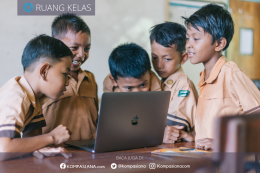History of B2B Indonesia-Mexico
Before delving into the history of collaboration between Indonesia and Mexico, it is essential to understand the background of this cooperation. Business-to-business (B2B) relations between the two countries in trade emphasize the importance of long-term business relationships to achieve significant gains.
Indonesia and Mexico have engaged in B2B trade collaboration, with Indonesia exporting essential commodities such as urea fertilizer, coal-based fertilizer, coconut shell charcoal, cinnamon, nutmeg, and pepper. On the other hand, Mexico offers sesame seeds, vegetable oil, canola seeds, sunflower seeds, and manufactured products.
The Indonesian government facilitates this collaboration through the Ministry of Trade by signing a memorandum of understanding (MoU) on cooperation between domestic and Mexican companies in the B2B trade scheme. This collaboration is a pilot project that can open export opportunities and contribute to national economic recovery.
There has been a significant increase in trade between the two countries, reaching USD 1.605 billion in 2022, the highest figure in the history of bilateral relations. Indonesia's most significant B2B exhibition, the Trade Expo Indonesia (TEI), is a crucial platform for expanding markets and strengthening trade between Indonesia and Mexico.
Jorge Lpez, Vice President of COMCE, highlights the potential of the Indonesian market, which has over 270 million inhabitants, more than twice the population of Mexico. Mexico considers Indonesia a market to be reckoned with, and the TEI event is seen as an excellent opportunity to enhance business relations between the two countries.
Overall, B2B collaboration between Indonesia and Mexico in trade shows excellent potential for the economic growth of both countries and has been a primary focus in their efforts to enhance bilateral relations.
Let's talk about the history of this b2b. The diplomatic relationship between Indonesia and Mexico began on April 6, 1953, shortly after Indonesia gained independence from the Netherlands in 1945. In 1958, President Soekarno, the first president of Indonesia, visited Mexico, marking a significant step in strengthening the bilateral ties between the two countries. Subsequently, in 1962, when Mexican President Adolfo Lopez Mateos visited Indonesia, communication between the two nations deepened. Over the decades, Indonesia and Mexico fostered extensive cooperation, particularly in scientific and technical fields, through knowledge and technology exchange, contributing to mutual progress in agriculture, energy, and information technology.
In general, despite some ebbs and flows due to differences in leadership paradigms, program priorities, and domestic conditions in each country, the bilateral relationship between Indonesia and Mexico has remained positive. During President Soekarno's tenure, Indonesia regarded Mexico as a strategic partner, hub, and bridge in the Latin American region. The diplomatic relations opened by Indonesia after gaining independence were considered a breakthrough, aiming to be free from Dutch interference.
President Soekarno witnessed a peak in political relations between Indonesia and Mexico during his leadership. The close ties between President Soekarno and Mexican President Adolfo Lpez Mateos marked a historic political era in the bilateral diplomatic relationship. The proximity of Indonesia's relations with the government of Mexico and several other Latin American countries, such as Argentina, Uruguay, and Cuba, became a breakthrough for President Soekarno as part of his foreign policy agenda.
Art, literature, and cultural exchanges played a fundamental role in bilateral relations, with frequent cultural events, exhibitions, and performances enriching public understanding of cultural diversity. In the economic realm, the growth of bilateral trade reflected a commitment to expanding economic cooperation, with foreign direct investment playing a pivotal role in strengthening economic ties between the two nations.








